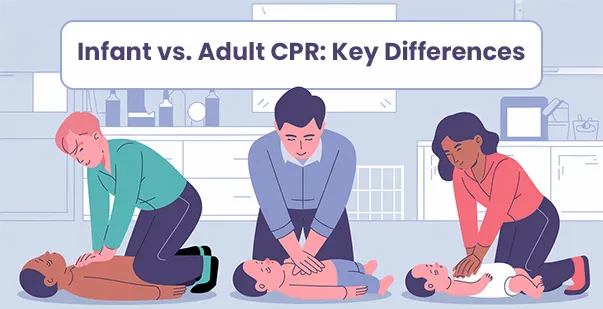CPR (Cardiopulmonary Resuscitation) is an emergency life-saving procedure performed when an individual stops breathing or their heart stops beating. Immediate CPR increases the chances of survival after sudden cardiac arrest. To make a difference in emergencies like choking or drowning, it is important to know the accurate steps of CPR.
Did you know that CPR techniques vary depending on the age of the victim? Read on to explore the differences in the approach of CPR Adult vs. Child.
Master ACLS Now
Get ACLS certified with confidence
Read More: Online BLS certification course
Are CPR Techniques The Same For Adults And Infants?
Most people think that CPR techniques are the same for adults and infants. However, that is not the case. You might be surprised to learn that nearly Approximately 25% to 30% of emergency department (ED) visits are pediatric patients.
Before delving into the specifics of child vs. adult CPR, it is important to understand the anatomical distinctions between age groups. Let’s take a brief look at their physiological differences below.
Child Anatomy and Physiology
The chest wall of infants, toddlers, and children is more flexible than that of adults. Their ribs are softer, which means the CPR technique must be adapted to suit their anatomy, using gentle chest compressions.
Additionally, a child’s airway is smaller, and their tongue occupies more space in their mouth. This can increase the likelihood of airway obstructions. Therefore ensure proper head positioning to open the airway effectively.
Adult Anatomy and Physiology
In contrast to a child’s anatomy, adults have larger and more rigid chest walls due to their fully developed bones and body structures. Their airways are more spacious, reducing the likelihood of airway obstruction compared to children.
Now, what is the primary difference between adult and child CPR? Let’s have a quick overview.
| Parameters | Adult | Child | Infant |
| Compressions | 100-120 per minute | 100-120 per minute | 100-120 per minute |
| Push limit | 5-6 cm | 3-4 cm | Up to one and a half inches |
| Hand Placement | Hnad heels with another hand, with fingers laced on another at the center | One hand at the center of the chest | Index and middle finger or both thumbs with fingers wrapped around the trunk at the center of the chest |
| Rescue breaths | 2 breaths for every 15 seconds | 2 breaths for every 30 seconds | 2 breaths for every 30 compressions |
Read More: Chest Compressions And Rarefactions – The First Line Response
What is the Difference Between Adult And Pediatric CPR?
CPR on a child is different from CPR on an adult. How? Infants, children, and adults differ in their physiology, bone density, musculature, and strength. Therefore, CPR must be performed differently in each emergency case. If you perform adult CPR on a child, it can cause more harm than good.
For instance, if the victim is a child, you should start CPR before calling 911. On the other hand, if the victim is an adult, you should call emergency services first and then start CPR. Let’s explore some of the primary differences between adult and pediatric CPR below.
Depth of Compression
The depth of chest compressions varies in child vs. adult CPR. The breastbone, or sternum, in adults is stronger and deeper compared to a child’s physiology. Therefore, adults require compressions with a depth between 2 and 2.4 inches.
Children, however, have less rigid bones and smaller chests. Therefore, the depth of chest compressions should be adjusted accordingly. The recommended depth for a child over the age of 1 is approximately 5 cm or 2 inches. For an infant or a child under the age of 1, the depth should typically be one-third of the diameter of their chest, which is about 1.5–2 inches.
Compression Rate
Now, what’s the primary difference between compressions on an adult vs. a small child? The rate of chest compression is the same for both adult CPR and pediatric CPR. You need to make sure that the proper pressure level is being maintained. It should be adequate to keep up the blood flow. When you administer timely and consistent chest compressions, it will aid in maintaining oxygen delivery and blood circulation throughout the organs.
Placement of Hand
Another important difference between CPR adult and child is the correct hand position during the procedure. Proper hand placement stimulates the heart without causing physical injury to the victim. When performing CPR on an adult, place both hands on the center of the chest. This helps maintain the optimal compression rate for effective resuscitation.
On the other hand, when performing CPR on a child, it is recommended to use just one hand and apply pressure on the chest right below the nipple line. Further adjustments in hand position are necessary when performing CPR on infants. Since their chests are small, use only two fingers to deliver chest compressions.
Ventilation
Ventilation in CPR provides oxygen to the victim’s lungs when they are not breathing or are struggling to breathe. The oxygen demands are higher for a child’s body compared to an adult’s.
However, in the case of Infant vs. child CPR, do not use full force to deliver rescue breaths as you would for adults. Instead, use your cheeks to puff air into the infant’s mouth and nose gently.
Compression-to-Ventilation Ratio
When performing CPR alone on adults or children, follow the recommended compression-to-ventilation ratio of 30:2. This means performing 30 chest compressions followed by 2 rescue breaths. However, the compression-to-ventilation ratio for infant CPR should be 15:2.
Use of AED
When witnessing someone go into sudden cardiac arrest, use an Automated External Defibrillator (AED) to revive their heart. Like other parameters, using an AED on adults and children involves a different approach.
Special AED pads are available for use on children. These pads are designed to deliver shocks with intensities appropriate for a child’s physiology. Because of their delicate body structures, they are suitable for children under the age of eight. If pediatric AED pads are unavailable, adult pads can be used with appropriate precautions.
Read More: Pediatric AED Pads on Adults: Can They Be Used Safely?
Conclusion: Empower Yourself to Respond in Emergency
Having CPR skills becomes a necessity to respond swiftly if you find yourself in a medical emergency situation. However, you should also know that it doesn’t have a one-size-fits-all approach. Each type of CPR has specific techniques and guidelines customized to the needs of individuals based on their age and physical condition. When you undergo bls training for their life-saving technique, you will learn the difference between CPR adult and child. When you follow CPR guidelines and adhere to recommended practices, you can stay confident in assisting victims of all ages in life-threatening situations.
References
- Differences Between Infant, Child, and Adult CPR – Avive AED
- Learn The Difference Between Adult, Infant, And Child CPR
- Important Differences Between Adult, Child and Infant CPR – DefibsPlus
- Adult Child and Infant CPR Lesson 2.pptx
- Fundamental Differences Between Adult Infant and Child CPR | WakeMed
- How to perform CPR – on adults, children and babies | healthdirect







